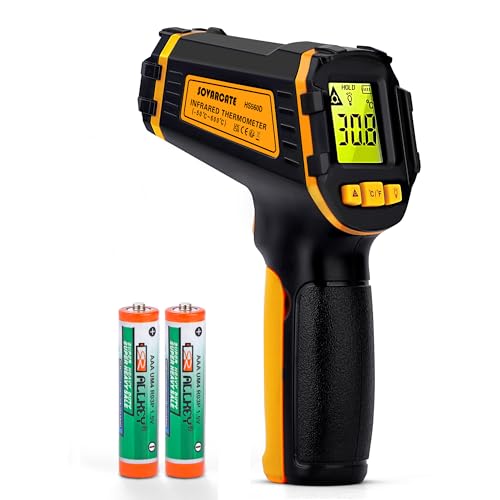What is Emissivity Setting?
Emissivity is a measure of a material’s ability to emit radiant energy. It is a ratio of the energy radiated by a material to the energy radiated by a blackbody at the same temperature. The emissivity setting on an infrared thermometer is a crucial factor that determines the accuracy of the temperature readings it provides. Understanding emissivity and how to set it is necessary to get accurate temperature readings.
How Does Emissivity Setting Work?
Infrared thermometers work by measuring the amount of infrared energy emitted by the object being measured. The amount of energy emitted depends on the material’s emissivity, which varies depending on the material’s surface properties and other factors. The emissivity setting on the thermometer is the adjustment of the ratio used to calculate the energy being emitted. Different materials have different emissivities, and setting the temperature taking this property into account can make all the difference in accuracy.
Why is Emissivity Setting Important?
Accurately measuring temperature is crucial in many applications, from cooking to industrial applications. Factors like surface roughness, surface finish, layers, and other objects that can be reflecting light, can all affect the temperature measurement. By adjusting the emissivity setting, you can compensate for these factors, providing accurate temperature readings that you can trust. Without considering emissivity, the thermometer could be providing erroneous results that could be potentially harmful.
How to Set the Emissivity on an Infrared Thermometer?
The best practice is to check the thermometer’s user manual to see if it lists the emissivity values for common materials like plastics, metals, food, and more. If not, you can look up the emissivity values online. Alternatively, you can rely on trial and error to determine the correct emissivity value for an object. Begin with a value of 0.95, which is the most common emissivity; if the reading is off, try adjusting it up or down until you get more accurate results.
The emissivity setting on an infrared thermometer is an essential feature that affects the accuracy of its temperature readings. Understanding how it works and how to adjust it correctly is necessary to get accurate measurements. By setting the emissivity to the right value, it is easier to find the temperature of a surface more accurately, regardless of its composition.






